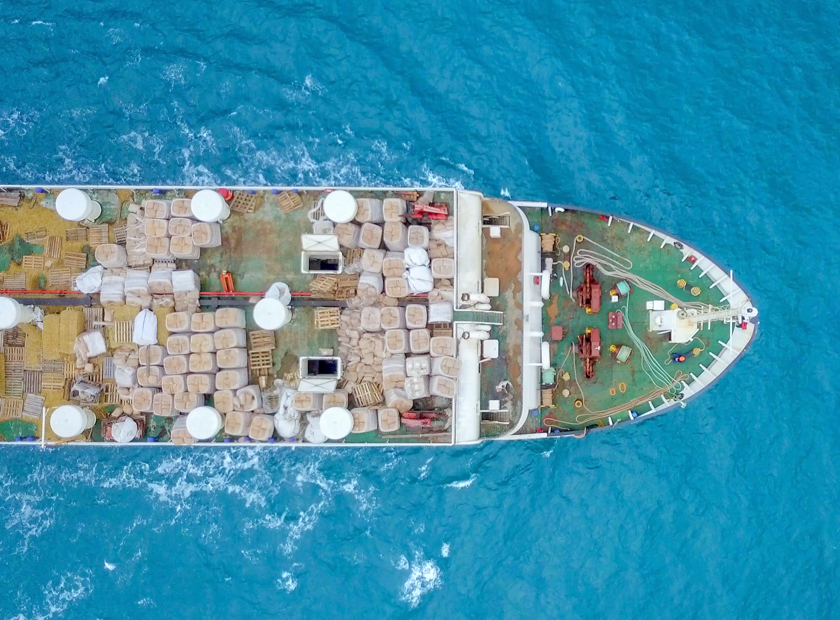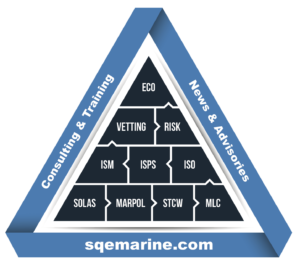AMSA issued Marine Notice 01/2021, announcing a Focused Inspection Campaign (FIC) for livestock carriers, which will run from 1 March 2021 to 31 August 2021.
Namely, AMSA inspectors will undertake the FIC in conjunction with Port State Control (PSC) inspections. Any PSC deficiencies will be reported to regional PSC databases. However, deficiencies that relate only to Marine Order 43 will be recorded separately, in accordance with normal AMSA processes, and will not be reported to regional PSC databases. Inspectors will complete a checklist when conducting the focused inspections so that AMSA can collate and report on the outcomes.
Purpose of Focused Inspection Campaign
The purpose of the FIC is to:
- determine the level of compliance with the maintenance and repair requirements of international conventions, and
- ensure masters and officers are complying with specific requirements of Marine Order 43 for ships that hold an Australian Certificate for the Carriage of Livestock, including voyage planning, determining the ship’s stability, and that accurate values are used for the livestock cargo carried.
Marine Order 43
Marine Order 43 is a document issued by AMSA (2018 and revised 2019) which includes regulations and requirements for the Livestock carriers operating in Australian waters. This document contains a list of 15 Divisions as below:
- Division 1 Preliminary
- Division 2 Loading
- Division 3 Vessel operations
- Division 4 Restrictions on carriage of livestock
- Division 5 Australian certificate for the carriage of livestock
- Division 6 Livestock services
- Division 7 Fire prevention and extinction
- Division 8 Bulk fodder and dust laden atmospheres
- Division 9 Access — people and livestock
- Division 10 Vessel requirements — all species of livestock
- Division 11 Species requirements
- Division 12 Hospital pens
- Division 13 Carriage of livestock in portable equipment
- Division 14 Short voyages
- Division 15 Reports and investigations
Focused Inspection Campaign Checklist
As part of AMSA’s livestock ships focused inspection campaign, AMSA surveyors are required to use a checklist when inspecting ships featuring 13 items that cover both PSC issues and Marine 43 topics. Checklist can be reviewed in Appendix A.
Actions required
AMSA encourages ship owners and masters to familiarize themselves with the maintenance requirements of their vessel, and the requirements of Marine Order 43 for the carriage of livestock from Australia.
Ship Managers should prepare their vessels (Livestock carriers) for the focused inspection campaign, by assessing the Marine Order’s 43 implementation on board and the item-by-item preparation following the issued checklist.
How we may help
SQEMARINE provides best practice guidance as per Appendix B in order a manager to address all issues featured in the checklist.
Appendix A: Focused Inspection Campaign Checklist
| No. | Question | Yes | No | N/A |
| Marine Order 43 Questions | ||||
| 1. | Is the Master aware of the weather forecast for the intended voyage? | |||
| 2. | Are tanks, voids and pumps inspected and maintained as per the Documented Maintenance Program (DMP)? | |||
| 3. | Where a drainage tank or well has an eductor or pump, is it capable of being powered by both the main and secondary source of power and operation demonstrated? | |||
| 4. | Can crew demonstrate operational familiarity with restoring power if the secondary source of power fails to start automatically? | |||
| 5. | Can livestock pens be effectively drained of fluids under any condition of trim or angle? | |||
| 6. | Is the ventilation operating satisfactorily? | |||
| 7. | Is the non-slip surface on the deck for pens, passageways and ramps satisfactory? | |||
| PSC Questions | ||||
| 8. | Has the ship undergone thickness measurement gauging at the last special survey in accordance with the Classification Rules? | |||
| 9. | Are all sewage effluents drained in accordance with MARPOL Annex IV? | |||
| 10. | Has the ship been maintained after survey in accordance with SOLAS Chapter I, Reg 11? | |||
| 11. | Is there evidence of a change to the structural arrangements without sanction by the Administration? | |||
| 12. | Have accurate values been used for calculation of ship stability for the intended voyage? | |||
| 13. | Are watertight doors, and remote indicators installed, under the freeboard deck functioning satisfactorily?? | |||
Appendix B: Best Practices
1. Is the Master aware of the weather forecast for the intended voyage?
Master prior departure to review the upcoming weather forecast covering all voyage. Local stations to be checked for further information. Web services and Navtex stations to be reviewed properly in order to receive accurate forecast. In case of adverse weather conditions, all applicable control measures to be taken, based on a detailed risk assessment for passage planning.
2. Are tanks, voids and pumps inspected and maintained as per the Documented Maintenance Program (DMP)?
SMS to include a detailed Maintenance program, with inspection schedule periodically as required by Marine Order 43. Documented evidence from inspections/ work schedules / maintenance to be available for inspection on board. Verification of inspections to be conducted during superintendents visits on board or during remote audits/inspections.
3. Where a drainage tank or well has an eductor or pump, is it capable of being powered by both the main and secondary source of power and operation demonstrated?
Both power sources (Main / secondary) to be checked prior departure for functioning. Crew to perform a training session regarding power sources for eductor and pumps. Operation of systems to be demonstrated during training.
4. Can crew demonstrate operational familiarity with restoring power if the secondary source of power fails to start automatically?
As per item #3, during training all required actions for power supply of systems to be demonstrated. Responsible officers to be familiar with main and secondary sources of power and in case of failure, the immediate restoration actions to start systems.
5. Can livestock pens be effectively drained of fluids under any condition of trim or angle?
Special care should be made for the drainage of livestock pens in all decks. Specific trim/angle requirements to be available in all cases and crew to be familiar with such requirements.
6. Is the ventilation operating satisfactorily?
Fans, and ventilators to be checked prior departure for effective functioning. Open/close position to be effectively marked. Crew to be familiar with the ventilation system actions required for each space regarding ventilation.
7. Is the non-slip surface on the deck for pens, passageways and ramps satisfactory?
Applicable spaces to be checked for anti – slip condition. Applicable anti-slip paints and covers to be used. The anti slip areas to be clearly marked on decks.
8. Has the ship undergone thickness measurement gauging at the last special survey in accordance with the Classification Rules?
Classification Society’s last special survey to be available on board for reference to PSC officers. Thickness measurement gauging tables to be available as well.
9. Are all sewage effluents drained in accordance with MARPOL Annex IV?
SMS or sewage management plan (if available) to include all required guidance for handling effluences as per MARPOL Annex IV.
10. Has the ship been maintained after survey in accordance with SOLAS Chapter I, Reg 11?
The condition of the ship and its equipment to be maintained properly to conform with the SOLAS regulations and ensure that the ship is safe to start voyage without danger to the ship or persons on board. After completion of any survey, no change to be made in the structural arrangements, machinery, equipment and other items covered by the survey, without the sanction of the Administration.
Whenever an accident occurs to a ship or a defect is discovered, either of which affects the safety of the ship or the efficiency or completeness of its life-saving appliances or other equipment, the master or owner of the ship shall report at the earliest opportunity to the Administration, the nominated surveyor or recognized organization responsible for issuing the relevant certificate, who shall cause investigations to be initiated to determine whether a survey, is necessary.
If the ship is in a port of another Contracting Government, the master or owner shall also report immediately to the appropriate authorities of the port state and the nominated surveyor or recognized organization shall ascertain that such a report has been made.
11. Is there evidence of a change to the structural arrangements without sanction by the Administration?
As per question 10.
12. Have accurate values been used for calculation of ship stability for the intended voyage?
Approved stability manual & software to be used for calculations prior departure. The calculations to be available for inspection of PSCO if requested. Ballasting requirements to take into consideration the loading condition and the stability calculations as applicable.
13. Are watertight doors, and remote indicators installed, under the freeboard deck functioning satisfactorily?
Detailed inspection program to be implemented for appropriate function and condition of watertight doors. Remote means of control to be checked periodically and be tested prior departure. Crew to be familiar with the operation and control of watertight doors. Means which prevent the watertight door to be firmly closed, to be removed.


